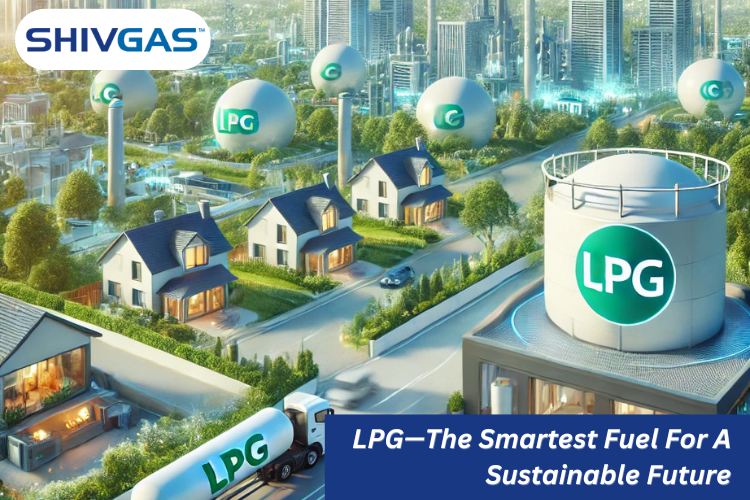
LPG, in recent times, has proven to be one of the popular, efficient, high-performance, multipurpose fuel choices. It has lower emissions, higher efficiencies, and cost effectiveness for household, commercial, or industrial use, bringing it in line with modern energy requirements. But what is the difference between LPG gas and conventional fuel? What makes it a wise decision for sustainability? Let us drive through how LPG gas builds a cleaner future.
LPG gas is a unique kind of fuel because it suits so many needs, and it is environment-friendly as well as it is energy efficient. Unlike fossil fuels, LPG neither produces carbon nor emits any kind of air pollution. It burns in a clean and efficient way, producing less greenhouse gases and almost no particulates. An LPG gas company plays a crucial role in serving a proper cooking fuel. Thus, here are the reasons for the superiority of LPG as fuel:
The perceptions surrounding the use of LPG as a fuel have formed a shield of misconception that deprives industries of some of the possibilities to make a transition towards cleanliness.
You can also learn about some Common myths and facts about Gas Agencies and LPG Services.
With rising fuel demands and the need for cleaner energy, LPG has emerged as the top alternative to petrol and diesel in India. Today, the most attractive aspect of LPG gas that makes it popular and commonly used is its versatility. From cooking in homes to running large industries, it is a trusted and efficient form of energy in various sectors.
Domestic households use LPG as a fast, clean, and efficient cooking fuel in the culinary sector. Instant heating capability with precise temperature control and smokeless operations are what LPG boasts for modern kitchens. LPG services are still used primarily for space heating systems, and even in fireplaces. This makes it a greener alternative to conventional fuels as well.
Industries need LPG gas because of its high energy output and comparatively low environmental impact. This resource is used by most industrial plants, factories, and commercial buildings for heating their boilers, furnaces, and machines. The food and hospitality industry also greatly rely on it. Similarly, the automotive sector continues to increase the adoption of LPG-powered vehicles to save on fuel and emissions.
The introduction of liquefied petroleum gas (LPG) in agriculture has revolutionized productivity. Farmers can now undertake measures like crop drying, irrigation pumps, and heating of greenhouses. These will ultimately result in higher and sustainable yields. LPG gas is fast being adopted in the rural areas, and has successfully replaced the old traditional biomasses. This helped in the achievement of improved, cleaner, and safer conditions of living.
Natural gas and liquefied petroleum gas (LPG) may share some similarities, but the two are different in many important aspects.
To harness the capability of LPG gas, it must be safely stored, handled, and maintained. Safety during usage prevents accidents and increases efficiency.
It is an absolute necessity to conduct a regular inspection of gas connections and cylinders to catch any leaks early to ensure complete safety.
Always store LPG gas in well-ventilated areas to prevent gas from accumulating.
Always look into aspects of LPG appliances and cylinders that fulfill industrial safety standards. Make sure that they are genuinely certified as per the industry standards and norms.
Always turn off the gas after appliances have been used to reduce the risk of fire.
Currently, progress is being made in the global energy needs that is leading towards a brighter future for LPG gas through the advancement of innovations such as bio-LPGs and renewable LPGs which are still under development. These innovative interventions have been established, which increasingly reduce inherent carbon footprints while maintaining equivalent performance and economics.
It is needless to mention that industries are investing in LPG-powered vehicles, smart gas distribution systems, and sustainable gas production to make LPG an integral part of global energy transformation. As businesses and households adapt to clean energy solutions, it remains at the cusp of sustainability, efficiency, and affordability.
You may also like: 5 Strategies to Reduce Fuel Costs with Industrial LPG
LPG gas turns out to be a better option than any mere fuel. Be it home, business, or industrial operations, LPG stands out with its efficiency, cost-effectiveness, and environmental benefits—all while seeking a greener future. Here at SHIVGAS, we know that energy is more than just power; it is reliability, convenience, and impact. That is why we bring you high-grade LPG with an uninterrupted supply and customer service that guarantees you the best energy solutions shaped to meet your needs. Make the switch today, and let us make a cleaner and more sustainable world, one flame at a time.
Comment (0)